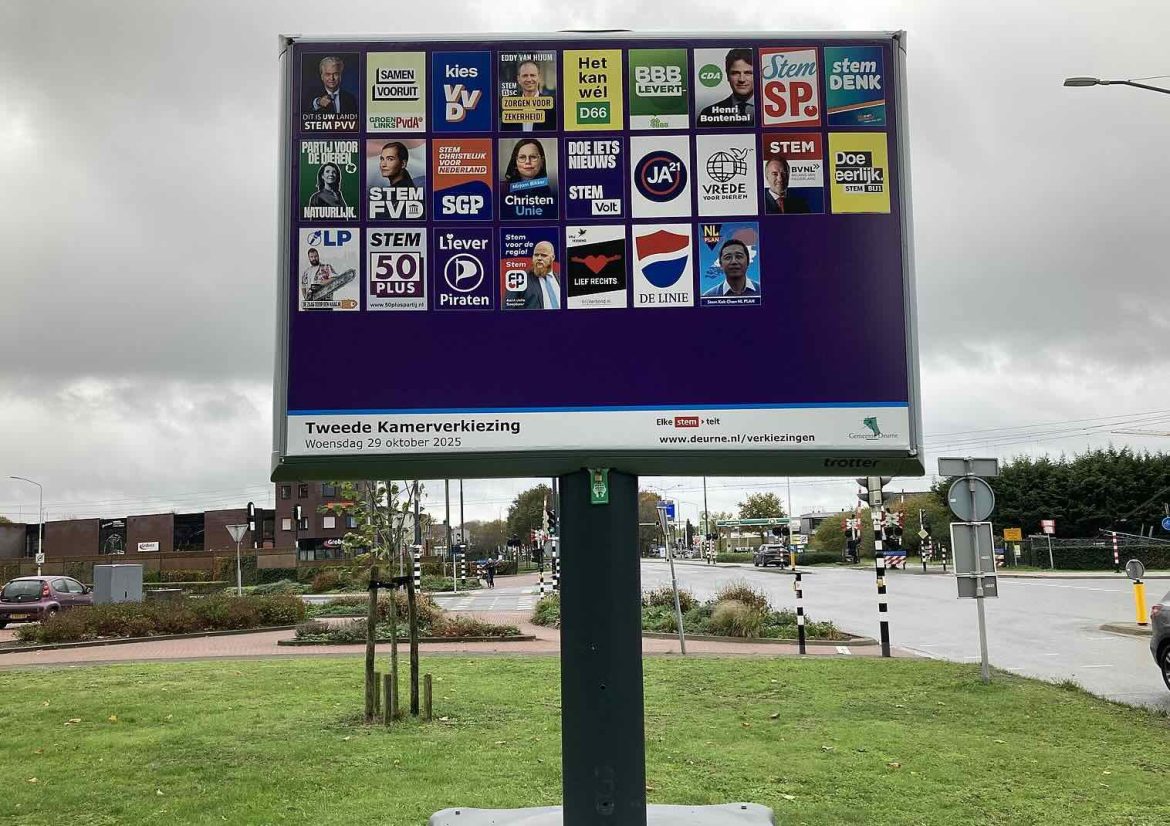The Netherlands votes today in snap parliamentary elections widely viewed as a test of the far right’s strength in Europe, with opinion polls indicating that Geert Wilders’ Party for Freedom (PVV) could emerge as the largest force but fall short of a governing majority.
Polling stations opened at 07:30 local time (06:30 GMT) and close at 21:00, with an exit poll expected shortly after. The vote comes less than 18 months after the last election and follows the collapse of the short-lived Schoof cabinet earlier this year.
Immigration and housing have dominated the campaign. Surveys place the PVV narrowly ahead, though support has eased from its 2023 peak. Several parties remain in close contention, and a significant share of voters indicated late indecision, underscoring the volatility of the race. In a proportional system that has produced increasingly fragmented parliaments, the next government will almost certainly require multi-party negotiations that could take weeks or months.
No party is expected to approach the 76 seats needed for a majority in the 150-member House of Representatives. Most rivals have reiterated reluctance to enter a coalition with Wilders, citing longstanding differences on constitutional protections, religion and migration policy. This dynamic raises the prospect that a runner-up party leader could ultimately be invited to form a coalition if the largest party cannot assemble partners.
The ballot presents Dutch voters with a broad choice: the electoral commission registered 27 parties and 1,166 candidates. The breadth reflects the absence of a formal threshold for entry to parliament, a feature that has enabled smaller lists to gain representation and has complicated coalition arithmetic. Issues cutting across party lines include pressure on asylum reception, the pace and scope of climate measures, health-care costs and a persistent shortage of affordable housing, particularly for younger voters.
The campaign’s context is the abrupt end of the coalition formed after the 2023 election. That arrangement—bringing together the PVV with the liberal-conservative VVD, the centrist New Social Contract (NSC) and the agrarian BBB under independent prime minister Dick Schoof—fell apart after disputes centred on asylum and migration. The break triggered the dissolution of the cabinet and today’s early vote, the third national election in less than five years.
Wilders has framed the contest around tighter border controls and limits to immigration, while opponents argue for measures that manage migration and uphold asylum commitments alongside practical steps to ease pressure on services and housing. In the final days, centre-left and liberal leaders pressed for alternatives to PVV priorities, signalling that any post-election talks are likely to be complex. The GreenLeft–Labour (GroenLinks–PvdA) alliance led by Frans Timmermans is among the groups vying for second place, with D66 and the Christian Democrats (CDA) also in contention for a role in coalition building.
Turnout will be closely watched. Fragmentation and late switching have become features of Dutch politics, and up to a dozen parties could win seats. That dispersion increases the number of viable coalition permutations but narrows the scope for ideologically cohesive deals. Several parties have signalled red lines on migration, climate and public finances, making trade-offs unavoidable in coalition negotiations.
Procedurally, the vote proceeds under open-list proportional representation. After results are confirmed, the House of Representatives will appoint a “scout” or informateur to explore combinations before a formateur attempts to assemble a cabinet. Recent Dutch formations have taken months, reflecting both the number of parties and substantive policy gaps. Given pre-election pledges to exclude the PVV from formal cooperation, attention is likely to focus on whether a minority arrangement with external support or a broad centrist pact can be constructed.
Beyond national politics, the outcome will be read across the EU as another data point in the current cycle’s rightward currents and counter-currents. A first-place finish for the PVV without a path to office would illustrate limits to far-right influence under proportional rules; a coalition including PVV or a policy programme shaped by its themes would signal further mainstreaming of restrictive migration measures. Either way, housing supply, asylum processing capacity and budgetary choices are set to anchor the early phases of any governing accord.
With 27 parties on the ballot and no threshold for entry, even small shifts may affect the seat map. As polls close at 21:00, the initial exit poll will offer a first indication of whether PVV has converted its lead into a durable plurality—and whether centre-left, liberal or Christian-democratic blocs have sufficient strength to shape or lead the coalition that follows. Formal talks will begin once final results are certified.


